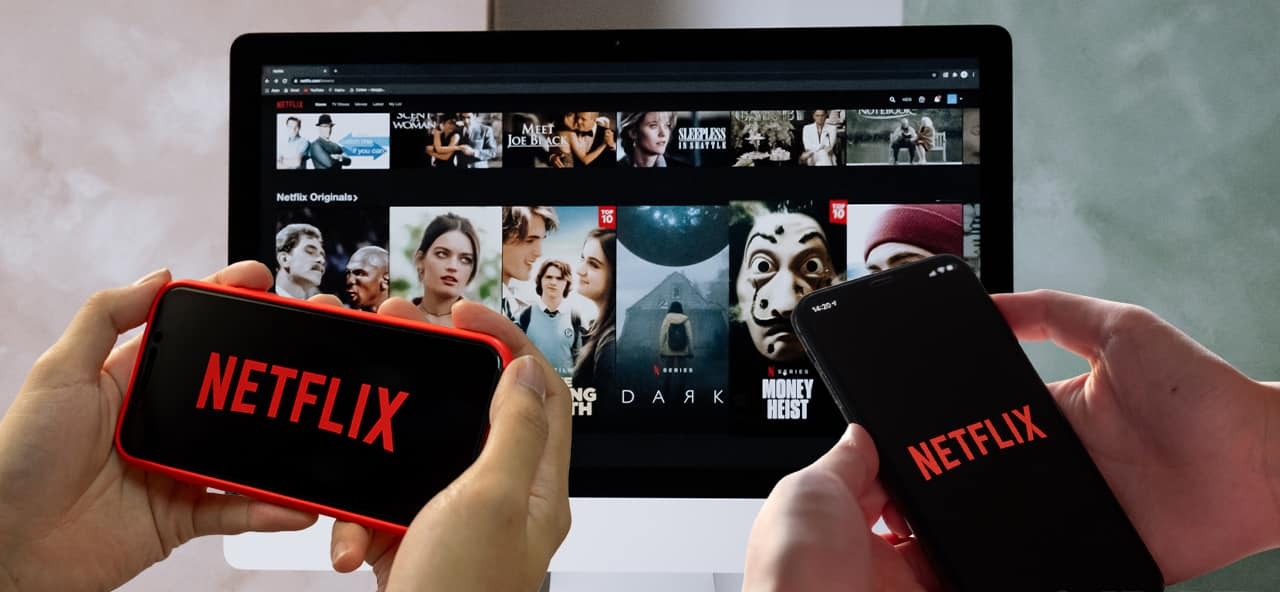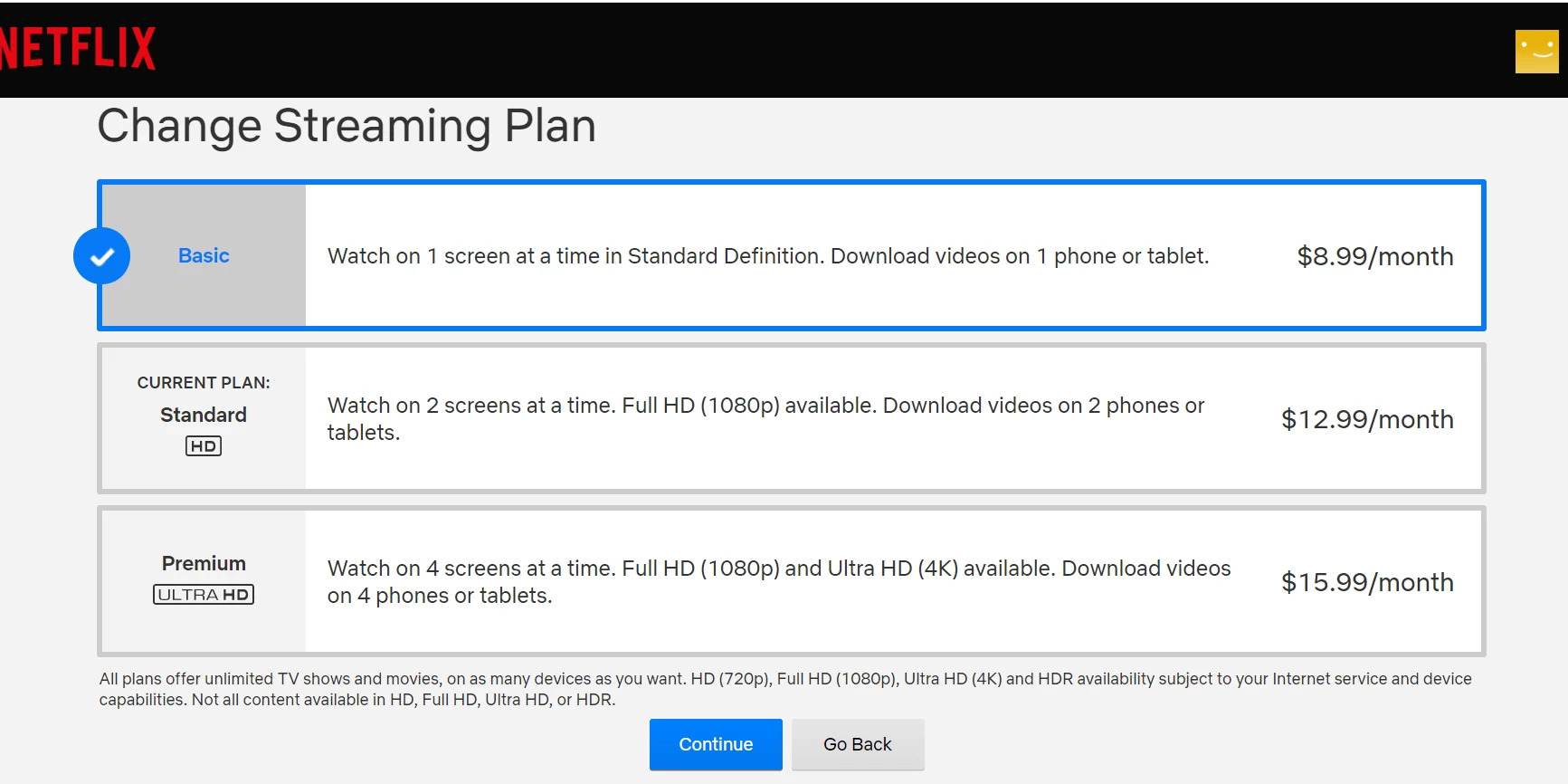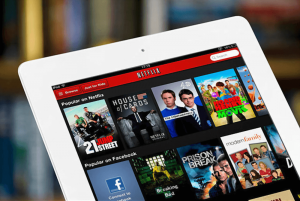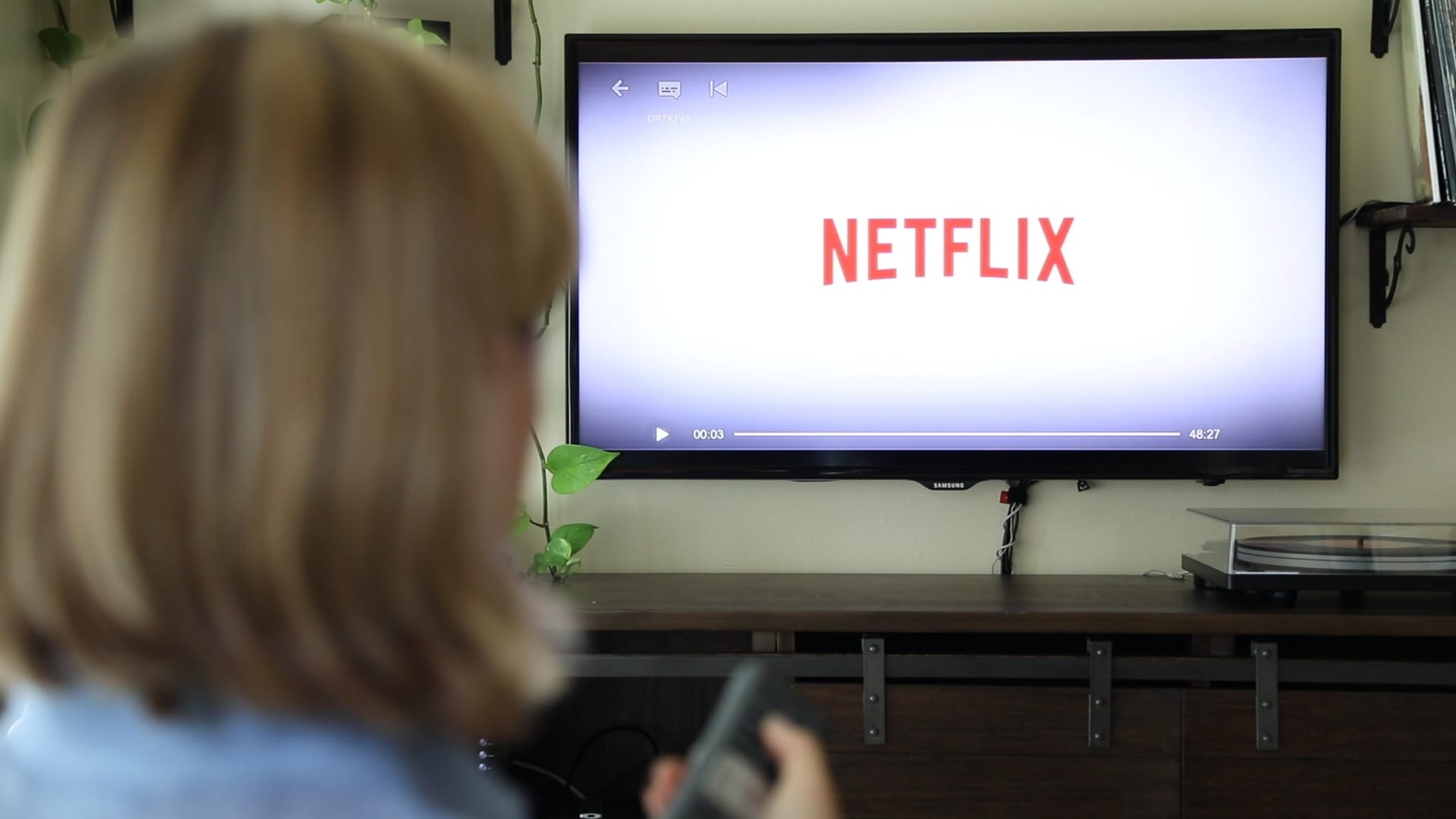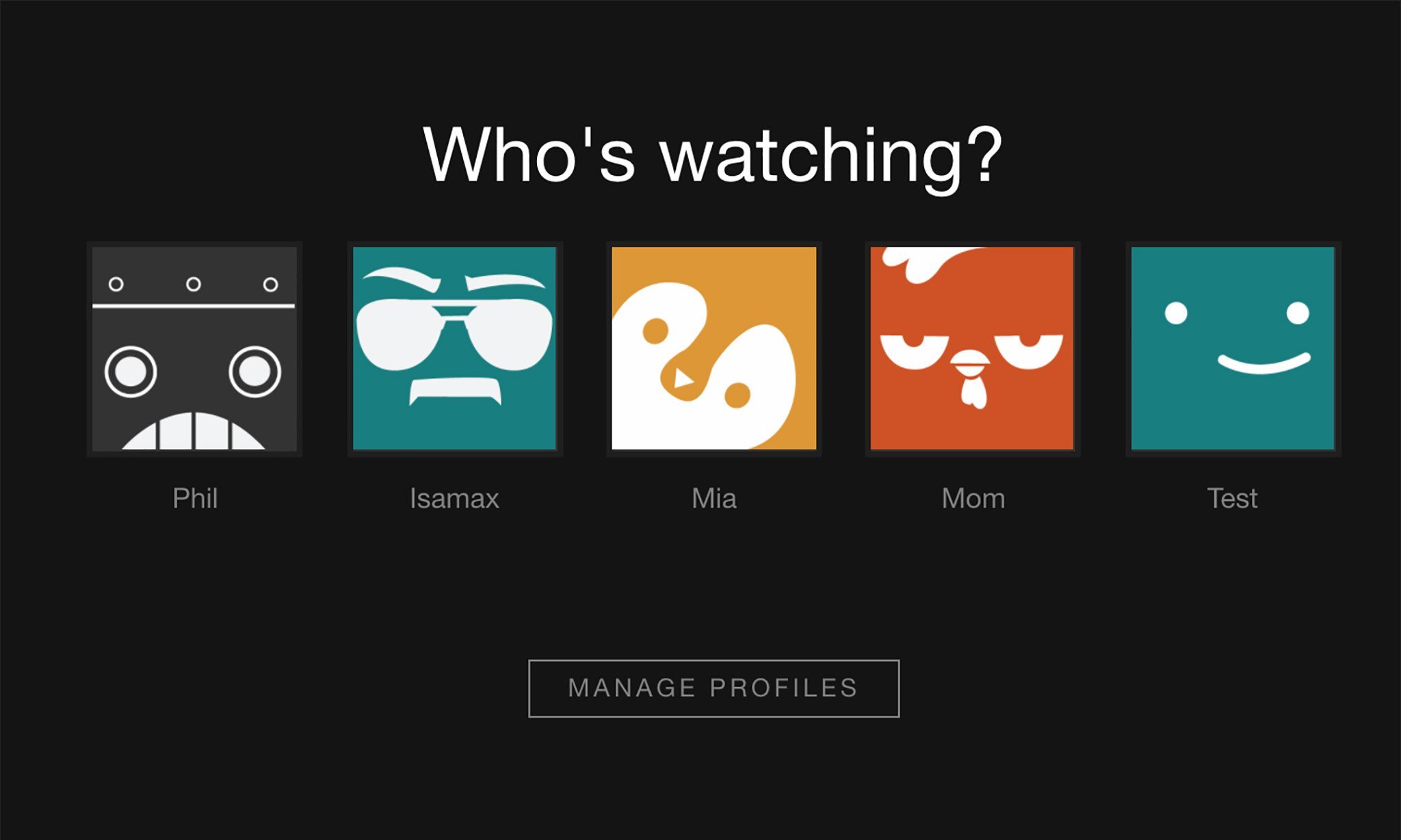Introduction
Netflix has revolutionized the way we enjoy television shows and movies, providing an extensive library of content that can be accessed anytime, anywhere. With millions of subscribers around the world, it’s no wonder that Netflix has become an essential part of many households. However, if you’re considering sharing your Netflix account or wondering how many devices can stream it simultaneously, you may have some questions. In this article, we will explore how many devices can stream Netflix at once and provide valuable information to help you understand the streaming plans and limitations.
As the popularity of Netflix continues to grow, so does the number of devices we use to access it. From smartphones and tablets to smart TVs and gaming consoles, we now have a wide range of options to enjoy our favorite shows and movies. But how many devices can be connected to Netflix at the same time? The answer depends on the type of Netflix plan you have and the number of concurrent streams it allows.
Before we delve into the details, let’s take a moment to understand the different Netflix streaming plans available. Netflix offers three main plans: the Basic Plan, the Standard Plan, and the Premium Plan. Each plan comes with its own set of features, including the number of devices that can simultaneously stream content.
The Basic Plan is the most affordable option and allows streaming on one device at a time. It’s perfect for individuals or households where only one person typically uses Netflix. The Standard Plan, on the other hand, allows streaming on two devices simultaneously, making it ideal for couples or small families. Lastly, the Premium Plan offers the most flexibility, allowing streaming on up to four devices at once, which is perfect for larger families or shared accounts.
It’s important to note that the number of concurrent streams is not dependent on the number of devices you have registered to your Netflix account. Even if you have multiple devices connected to your account, you can only stream on the specified number of devices allowed by your plan. For example, if you have the Standard Plan, you can stream on two devices at the same time, regardless of how many devices you have linked to your account.
However, sharing Netflix accounts is a common practice among friends and family members. This allows multiple people to access the same account and enjoy the wide variety of content available on Netflix. Sharing an account can also help reduce subscription costs. But how many people can share a Netflix account? The official Netflix policy allows for sharing an account with members of your household. While the exact number of people who can share an account is not explicitly stated, it is generally accepted that sharing with immediate family members or close friends is within the terms of service.
How Many Devices Can Stream Netflix at Once?
If you’re wondering about the maximum number of devices that can stream Netflix at the same time, it depends on the streaming plan you have. As mentioned earlier, Netflix offers three different plans with varying levels of concurrent streaming capabilities: Basic, Standard, and Premium.
The Basic Plan allows streaming on one device at a time. This means that if you’re on this plan, only one person can watch Netflix at any given moment. It’s important to note that this limitation applies to both streaming on TVs and mobile devices. So, if you’re watching Netflix on your smartphone, it will count as one of the concurrent streams available on your account.
On the Standard Plan, you can stream on up to two devices simultaneously. This is great for couples or small families who want to watch different shows or movies on separate devices. For example, one person can watch a movie on the living room TV while another family member enjoys a TV series on their tablet. Both streams will be counted as part of the two concurrent streams allowed with the Standard Plan.
If you have the Premium Plan, you can take full advantage of Netflix’s streaming capabilities. This plan offers up to four concurrent streams, allowing multiple people to watch different content on different devices at the same time. This is perfect for larger families or for sharing your account with friends. Each person can enjoy their own show or movie without any interruptions or conflicts.
It’s worth noting that the maximum number of devices that can access Netflix on your account is not limited to the number of concurrent streams. You can have more devices registered to your account, but only the specified number of concurrent streams allowed by your plan can be used simultaneously. For example, with the Basic Plan, if you have three devices registered, only one of them can stream at a time.
Also, keep in mind that the availability of concurrent streaming may vary depending on the region or country you’re in. Netflix has different policies and plans for different regions, so it’s a good idea to check with Netflix’s official documentation or customer support to get accurate information for your specific location.
In summary, the maximum number of devices that can stream Netflix at once depends on the plan you have. The Basic Plan allows for one simultaneous stream, the Standard Plan permits two streams, and the Premium Plan provides up to four concurrent streams. It’s important to choose the right plan based on your household’s needs to ensure a seamless and enjoyable streaming experience for everyone.
Understanding Netflix Streaming Plans
Netflix offers a variety of streaming plans to cater to different needs and preferences. Understanding these plans will help you choose the one that best suits your streaming habits and budget.
The Basic Plan is the most affordable option, offering access to Netflix’s entire library of content. With this plan, you can stream on one device at a time, whether it’s a TV, laptop, or mobile device. This plan is perfect for individuals or small households who primarily use Netflix on a single device.
The Standard Plan is the most popular choice for many subscribers. It allows for simultaneous streaming on two devices, giving you the flexibility to watch different shows or movies on separate devices at the same time. This plan is great for couples or small families who have multiple devices and want to enjoy Netflix together without any conflicts.
For those who desire the ultimate flexibility and convenience, the Premium Plan is the way to go. This plan includes all the features of the Standard Plan but allows for streaming on up to four devices at once. With this plan, you can provide access to multiple family members or share your account with friends. It’s ideal for larger families or households where many people want to watch Netflix simultaneously.
Another important aspect to consider when choosing a streaming plan is the video quality. The Basic Plan offers SD (Standard Definition) quality, which is suitable for smaller screens or slower internet connections. The Standard Plan, on the other hand, provides HD (High Definition) quality, allowing you to enjoy a sharper and more detailed viewing experience on compatible devices.
If you’re a fan of the best picture quality and immersive audio, the Premium Plan is for you. This plan enables you to stream in 4K Ultra HD (UHD) with High Dynamic Range (HDR) support on compatible devices. The stunning visuals and enhanced audio will bring your favorite shows and movies to life like never before.
It’s important to note that the pricing for each plan may vary depending on your region or country. Netflix adjusts its pricing in different markets to account for various factors such as currency exchange rates and local market conditions. Therefore, it’s always a good idea to check the Netflix website for the accurate pricing details in your specific location.
By understanding the different streaming plans offered by Netflix, you can make an informed decision based on your viewing preferences, the number of devices you have, and your budget. Whether you choose the Basic, Standard, or Premium Plan, you’ll have access to a vast library of content and enjoy a seamless streaming experience at your convenience.
Basic Plan
The Basic Plan offered by Netflix is the most affordable option for subscribers. It provides access to Netflix’s extensive library of movies, TV shows, and original content at a budget-friendly price.
With the Basic Plan, you can stream content on one device at a time. Whether it’s on your TV, laptop, tablet, or smartphone, you can enjoy your favorite shows and movies without interruptions. This plan is perfect for individuals or small households where only one person typically uses Netflix.
While the Basic Plan offers a single-streaming capability, it still provides the same access to all Netflix’s content libraries as the other plans. You can explore a wide range of genres, including drama, comedy, action, documentary, and more. From blockbuster movies to award-winning TV series, there is something for everyone to enjoy.
One of the advantages of the Basic Plan is its affordability. It is an excellent option for those who want to experience Netflix’s vast collection of content without breaking the bank. If you’re on a tight budget or looking for a cost-effective streaming option, the Basic Plan is an ideal choice.
It’s important to note that while the Basic Plan offers access to all content, it provides a maximum video quality of SD (Standard Definition). This means that the resolution of the video will be lower compared to the higher-tier plans. However, SD quality is still suitable for smaller screens or devices and can provide a satisfying viewing experience.
Another thing to keep in mind with the Basic Plan is that it does not support simultaneous streaming on multiple devices. This means that if someone in your household is already streaming Netflix, you won’t be able to watch on a separate device until their stream finishes. However, if you’re the only person using Netflix or if you don’t mind coordinating viewing times with others, this limitation may not be an issue.
In summary, the Basic Plan offered by Netflix provides affordable access to a wide variety of content. While it offers the fewest simultaneous streams and SD video quality, it is a great option for individuals or small households who want to enjoy Netflix’s extensive library of movies and TV shows at an affordable price.
Standard Plan
The Standard Plan offered by Netflix is a popular choice among subscribers looking for a balance of features and affordability. It provides access to a vast library of movies, TV shows, and original content, along with the flexibility of streaming on multiple devices simultaneously.
With the Standard Plan, you can enjoy streaming content on up to two devices at the same time. Whether you’re watching on your TV, laptop, tablet, or smartphone, you have the freedom to watch different shows or movies on separate devices. This makes it an ideal choice for couples or small families who want to enjoy Netflix together on their own devices.
Like the Basic Plan, the Standard Plan grants you access to all the content available on Netflix, including a diverse range of genres and categories. From trending series and documentaries to blockbuster movies and exclusive Netflix originals, there is no shortage of entertainment options to choose from.
An advantage of the Standard Plan over the Basic Plan is the ability to stream in HD (High Definition) quality. This means that you can enjoy a sharper and more detailed visual experience, especially on larger screens. The enhanced video quality adds a new level of immersion to your favorite shows and movies.
One consideration with the Standard Plan is that it does not include support for streaming in 4K Ultra HD or HDR. If you have a compatible device and want to indulge in the highest quality video and audio, you may want to consider the Premium Plan instead. However, for most subscribers, the HD quality provided by the Standard Plan is more than sufficient to enjoy a stunning viewing experience.
It’s worth noting that the Standard Plan offers an excellent balance between features and price. It provides the flexibility of streaming on multiple devices simultaneously, making it convenient for couples or families with different viewing preferences. While it is slightly more expensive than the Basic Plan, the additional benefits, such as HD quality and multiple streams, make it a popular choice for many Netflix subscribers.
In summary, the Standard Plan offered by Netflix allows for simultaneous streaming on up to two devices. It provides access to Netflix’s extensive content library, including a diverse range of genres and categories. With HD video quality, it offers a superior visual experience compared to the Basic Plan. If you’re looking for a flexible and affordable option that caters to multiple viewers in your household, the Standard Plan is an excellent choice.
Premium Plan
The Premium Plan offered by Netflix is the top-tier option for subscribers who want the ultimate streaming experience. It provides access to a vast library of movies, TV shows, and original content, along with the flexibility of streaming on multiple devices simultaneously with the highest quality video and audio.
With the Premium Plan, you can enjoy streaming content on up to four devices concurrently. Whether you’re watching on your TV, laptop, tablet, or smartphone, multiple family members or friends can enjoy different shows or movies on their own devices simultaneously. This makes it an excellent choice for larger families or those who want to share their Netflix account with others.
Similar to the other plans, the Premium Plan grants you access to all the content available on Netflix, ensuring that you never run out of entertainment options. From critically acclaimed series and movies to exclusive Netflix originals, there is something for everyone to enjoy.
One of the standout features of the Premium Plan is the ability to stream in 4K Ultra HD (UHD) with High Dynamic Range (HDR) support, provided you have a compatible device. This means that you can experience stunning visuals with vibrant colors, greater detail, and enhanced contrast. The enhanced video quality truly brings your favorite shows and movies to life, making the viewing experience more immersive and captivating.
In addition to the exceptional video quality, the Premium Plan also offers enhanced audio. You can enjoy movies and shows with Dolby Atmos surround sound, delivering a three-dimensional audio experience that adds depth and realism to your viewing experience. The combination of superior video and audio quality makes the Premium Plan the ultimate choice for avid movie lovers and home theater enthusiasts.
It’s important to note that the Premium Plan comes at a higher price point compared to the Basic and Standard Plans. However, if you prioritize the highest quality video and audio and want to enjoy Netflix on multiple devices simultaneously, the Premium Plan offers excellent value for your money.
Overall, the Premium Plan is the most comprehensive and feature-rich option offered by Netflix. It allows for streaming on up to four devices at once, offers 4K UHD video quality with HDR support, and provides enhanced audio through Dolby Atmos. If you’re seeking the ultimate streaming experience and are willing to invest a little more, the Premium Plan is the perfect choice to elevate your Netflix viewing to new heights.
Concurrent Streaming on Different Plans
Netflix offers different streaming plans with varying levels of concurrent streaming capabilities. Understanding how many devices can stream simultaneously on each plan is important, especially if you have multiple people in your household or if you want to share your account with others.
The Basic Plan allows for streaming on one device at a time. This means that if you’re on the Basic Plan, only one person can watch Netflix at any given moment. Whether you’re watching on a TV, laptop, tablet, or smartphone, only one stream can occur. If someone is already watching Netflix on another device registered to your account, you will have to wait for their stream to finish before you can start watching on your own device.
The Standard Plan offers an upgrade in concurrent streaming capabilities. With this plan, you can stream on up to two devices simultaneously. This allows you and another family member or friend to watch different shows or movies on separate devices at the same time. For example, one person can watch their favorite TV series on the living room TV while another family member enjoys a movie on their tablet in another room.
The Premium Plan provides the most flexibility when it comes to concurrent streaming. It allows for streaming on up to four devices concurrently. This means that multiple people can watch different content on different devices at the same time. It’s perfect for larger families or for sharing your account with friends, as each person can enjoy their own show or movie without any interruptions or conflicts.
It’s important to note that the number of concurrent streams allowed by each plan is independent of the number of devices registered to your Netflix account. Even if you have multiple devices connected to your account, you can only stream on the maximum number of devices allowed by your plan. For example, if you have the Standard Plan, you can stream on two devices at the same time, regardless of how many devices you have linked to your account.
Keep in mind that the availability of concurrent streaming may vary based on your region or country. Netflix has different policies and plans in different markets, so it’s always a good idea to check with Netflix’s official documentation or customer support to get accurate information for your specific location.
In summary, the number of devices that can stream Netflix simultaneously depends on the plan you have. The Basic Plan allows for one concurrent stream, the Standard Plan permits two streams, and the Premium Plan provides up to four concurrent streams. It is important to choose the right plan based on your viewing needs and how many people will be using Netflix simultaneously in your household or account.
Sharing Netflix Accounts
Sharing Netflix accounts has become a common practice among friends and family members. It allows multiple people to enjoy the vast library of content available on Netflix while potentially reducing subscription costs. However, it’s important to understand the guidelines and limitations associated with sharing Netflix accounts.
According to the official Netflix policy, sharing an account with members of your household is acceptable. While the exact number of people who can share an account is not explicitly stated, it is generally accepted that sharing with immediate family members or close friends falls within the terms of service. This means that if you live in the same household or have a close relationship with the person you are sharing the account with, you are less likely to encounter any issues.
Netflix understands that households have different needs and that multiple people may use the same account. As long as the account is being used by individuals belonging to the same household or within a reasonable circle of trust, sharing is generally accepted and allowed.
However, sharing your account with individuals outside of your household or a close relationship is not in compliance with Netflix’s terms of service. In some cases, Netflix may detect unusual login activity or simultaneous streaming from different locations and prompt you to verify your account ownership. Failure to comply with their terms of service guidelines could result in the termination of your account.
It’s important to remember that sharing your account credentials with anyone outside of your household or close circle of trust poses potential security risks. Always be cautious and only share your account information with those you trust to prevent unauthorized access to your account and personal information.
Netflix also offers a feature called “Profiles” that allows different individuals within a household to have their own personalized recommendations and viewing history. This makes it easier for multiple users to manage their own separate preferences and enjoy a more personalized streaming experience.
If you want to share your Netflix account, it’s essential to communicate and set clear expectations with the individuals you are sharing the account with. Discuss guidelines such as the number of devices that can stream simultaneously and respect each other’s preferences and viewing habits.
Keep in mind that while sharing your Netflix account can be convenient and cost-effective, it’s important to stay within the guidelines and respect Netflix’s terms of service. Sharing with immediate family members or close friends within the same household is generally accepted, but sharing with others outside of that circle may be a violation of the terms of service.
In summary, sharing Netflix accounts with household members or close friends is generally allowed and falls within the terms of service. However, sharing with individuals outside of your household or a close relationship may not be in compliance and could result in the termination of your account. Communicate and set clear expectations with the individuals you are sharing the account with to ensure a smooth and enjoyable streaming experience for everyone involved.
How Many Devices Can Be Connected to Netflix?
Netflix allows users to register multiple devices to their account, providing flexibility and convenience in accessing their favorite shows and movies. However, it’s important to understand the limitations on how many devices can be connected to Netflix simultaneously.
There is no specific limit on the number of devices that can be registered to a Netflix account. You can add as many devices as you like, including smartphones, tablets, computers, gaming consoles, and smart TVs. This allows you to access Netflix from multiple devices and ensures that you can enjoy your favorite content across various platforms.
However, the number of devices that can stream Netflix simultaneously is determined by the specific plan you have subscribed to. The Basic Plan allows for streaming on one device at a time, while the Standard Plan permits streaming on up to two devices concurrently. The Premium Plan, on the other hand, allows for streaming on up to four devices simultaneously.
It’s important to note that even if you have registered multiple devices, you can only stream on the maximum number of devices allowed by your plan. For example, if you have the Standard Plan and have four devices registered to your account, you can only stream on up to two devices at the same time. The other two devices will not be able to stream Netflix until one of the current streams finishes.
Another factor to consider is that the availability of concurrent streaming may be affected by your geographic location. Netflix has different policies and plans in different regions, and the number of devices that can stream simultaneously may vary accordingly. It’s always a good idea to check Netflix’s official documentation or contact their customer support for accurate information regarding the maximum number of devices that can stream simultaneously in your specific location.
In addition to the number of devices that can stream Netflix at once, it’s also worth mentioning that the quality of your internet connection can impact the streaming experience. To ensure smooth playback and uninterrupted streaming, a stable and reliable internet connection is recommended, especially if you have multiple devices connected and streaming at the same time.
In summary, while there is no specific limit on the number of devices that can be registered to a Netflix account, the maximum number of devices that can stream simultaneously is determined by the plan you have subscribed to. It’s important to choose the plan that best suits your needs and consider factors such as the number of people in your household and the devices they use to ensure everyone can enjoy Netflix seamlessly.
Maximum Number of Concurrent Streams
The maximum number of concurrent streams refers to the maximum number of devices that can stream content from Netflix at the same time. This limitation varies depending on the specific Netflix plan you have subscribed to.
The Basic Plan allows for a single concurrent stream. This means that only one device can stream Netflix at any given time. If someone is already streaming content on a device registered to your account, you will have to wait until their stream finishes before you can start streaming on another device. The Basic Plan is designed for individuals or small households where only one person typically uses Netflix.
The Standard Plan offers an upgrade in terms of concurrent streaming capabilities. With this plan, you can stream on up to two devices simultaneously. This means that two different people can watch Netflix on separate devices at the same time without any conflicts. It’s perfect for couples or small families who want to enjoy Netflix together without any interruptions.
The Premium Plan provides the highest level of concurrent streaming. With this plan, you can stream on up to four devices concurrently. This means that multiple family members or friends can watch different shows or movies on their own devices at the same time. The Premium Plan is ideal for larger families or for sharing your account with others.
It’s important to note that the maximum number of concurrent streams is independent of the number of devices you have registered to your Netflix account. Even if you have more devices registered, you can only stream on the maximum number of devices allowed by your plan.
Another factor to consider is the geographic location. Netflix has different plans and policies in different regions, so the number of concurrent streams may vary depending on your location. It’s recommended to check Netflix’s official documentation or reach out to their customer support for accurate information on the maximum number of concurrent streams allowed in your specific region.
It’s also worth mentioning that the availability of concurrent streaming is subject to internet bandwidth limitations. If you have multiple devices streaming simultaneously, it may affect the overall network performance, leading to potential buffering or reduced video quality. Ensuring that you have a stable and robust internet connection will help optimize the streaming experience for all devices connected to your Netflix account.
In summary, the maximum number of concurrent streams varies based on the Netflix plan you have subscribed to. The Basic Plan allows for one stream, the Standard Plan permits two streams, and the Premium Plan provides up to four concurrent streams. Considering the needs of your household or the number of people sharing the account will help you choose the right plan to ensure everyone can enjoy Netflix simultaneously.
Factors That May Affect Streaming Quality
Streaming quality refers to the visual and audio experience while watching content on Netflix. Several factors can affect the streaming quality, including internet connection speed, device capabilities, network congestion, and content availability. Understanding these factors can help ensure a smooth and enjoyable streaming experience.
Internet connection speed is one of the primary factors that impact streaming quality. A faster internet connection will allow for higher-quality video and smoother playback. Netflix recommends a minimum internet speed of 3 Mbps for SD (Standard Definition) quality, 5 Mbps for HD (High Definition) quality, and 25 Mbps for 4K Ultra HD quality. Slower connection speeds may result in buffering, lower resolution, or interruptions in the playback.
Device capabilities also play a significant role in streaming quality. Different devices have varying capabilities in terms of screen resolution and audio output. For example, if you want to enjoy 4K Ultra HD content, you will need a compatible device and a corresponding display that supports that resolution. Similarly, if you desire enhanced audio quality, you may need external speakers or a sound system that can deliver the desired audio experience.
Network congestion can affect streaming quality, especially during peak usage times. When many users in your household or in your area are streaming content simultaneously, it can strain the network capacity, leading to slower internet speeds and potential interruptions in playback. It’s advisable to stream during non-peak hours or consider upgrading your internet plan for faster and more reliable speeds.
Content availability also impacts the streaming quality. Not all shows and movies on Netflix are available in the same quality across all devices. While the majority of content is available in HD, some older titles may be limited to SD quality. Additionally, 4K Ultra HD and HDR content may only be accessible if you have a compatible device and meet the necessary internet speed requirements.
Another factor to consider is the distance between your device and the Wi-Fi router. If you’re using Wi-Fi for streaming, the signal strength may weaken the further you are from the router. This can result in slower internet speeds and potential interruptions in streaming quality. Positioning yourself closer to the router or using a Wi-Fi booster can help improve the signal strength and enhance the streaming experience.
Lastly, the performance of the Netflix app or website itself can impact streaming quality. It’s important to keep your Netflix app or browser up to date to ensure you have the latest bug fixes and performance improvements. Clearing your browser cache or reinstalling the app can also help resolve any potential issues that may impact streaming quality.
In summary, several factors can affect streaming quality on Netflix. Internet connection speed, device capabilities, network congestion, content availability, and proximity to the Wi-Fi router all play a role in determining the overall streaming experience. Paying attention to these factors and taking necessary measures to optimize them will help ensure a smooth and enjoyable streaming experience.
Tips for a Smooth Streaming Experience
Streaming content on Netflix should be a seamless and enjoyable experience. To ensure a smooth streaming experience, consider the following tips:
- 1. Check your internet connection: Ensure that you have a stable and reliable internet connection with sufficient speed for streaming. Try to connect your device directly to the router or use a Wi-Fi signal booster if needed.
- 2. Choose the right streaming plan: Select a Netflix plan that suits your needs and the number of people in your household. Consider how many devices will be streaming simultaneously and choose a plan accordingly.
- 3. Optimize device settings: Adjust your device settings to enhance the streaming experience. Keep your device updated with the latest software and ensure that the Netflix app or website is up to date as well.
- 4. Close unnecessary background applications: Closing unnecessary apps and programs running in the background can free up system resources and improve the performance of your device while streaming.
- 5. Reduce network congestion: Try to stream during non-peak hours to avoid network congestion. If you experience buffering or slow playback, consider upgrading your internet plan for faster speeds.
- 6. Position your device closer to the Wi-Fi router: If you’re using Wi-Fi, ensure that your device is in close proximity to the router to maintain a strong and stable Wi-Fi signal.
- 7. Limit background downloads or uploads: Avoid downloading or uploading large files while streaming Netflix, as it may consume bandwidth and affect the streaming quality.
- 8. Clear browser cache or app data: If you’re experiencing any issues with the Netflix app or website, clearing the browser cache or app data can resolve potential conflicts and improve performance.
- 9. Optimize video quality settings: Adjust the video quality settings on your Netflix account to match your internet connection speed. Higher quality settings require faster internet speeds, so choose an appropriate option to avoid buffering or playback issues.
- 10. Consider using a wired connection: For the best performance, consider using a wired connection if possible. Ethernet connections can provide a more stable and reliable connection compared to Wi-Fi.
By following these tips, you can enhance your streaming experience on Netflix. From optimizing your internet connection to adjusting your device settings, these measures will help ensure smooth playback, uninterrupted streaming, and a more enjoyable binge-watching experience.
Conclusion
Netflix has become an integral part of our entertainment landscape, providing a vast library of movies, TV shows, and original content. Understanding how many devices can stream Netflix simultaneously and the different streaming plans available is crucial for a seamless and enjoyable streaming experience.
With the Basic Plan, you can stream on one device at a time, making it ideal for individuals or small households. The Standard Plan offers simultaneous streaming on up to two devices, catering to couples or small families who want to enjoy Netflix together. The Premium Plan provides the highest level of flexibility, allowing streaming on up to four devices simultaneously, perfect for larger families or sharing an account with friends.
Sharing Netflix accounts with household members or close friends is generally allowed and falls within the terms of service. However, sharing with individuals outside of your household or close circle may not be in compliance and could result in the termination of your account. It’s important to respect the guidelines set by Netflix and prioritize account security.
Several factors can affect streaming quality, including internet connection speed, device capabilities, network congestion, and content availability. Optimizing these factors by ensuring a stable and fast internet connection, using compatible devices, and avoiding network congestion can enhance your streaming experience.
By following tips such as choosing the right streaming plan, optimizing device settings, and positioning your device closer to the Wi-Fi router, you can ensure a smooth and uninterrupted streaming experience on Netflix. Considering these factors and implementing the recommended measures will contribute to a more enjoyable and immersive streaming experience for you and your household.
In conclusion, understanding the number of devices that can stream Netflix simultaneously, the different streaming plans available, and optimizing various factors that impact streaming quality will help you make the most out of your Netflix subscription. With the right plan and optimal settings, you can sit back, relax, and enjoy your favorite shows and movies on Netflix, anytime and anywhere.







